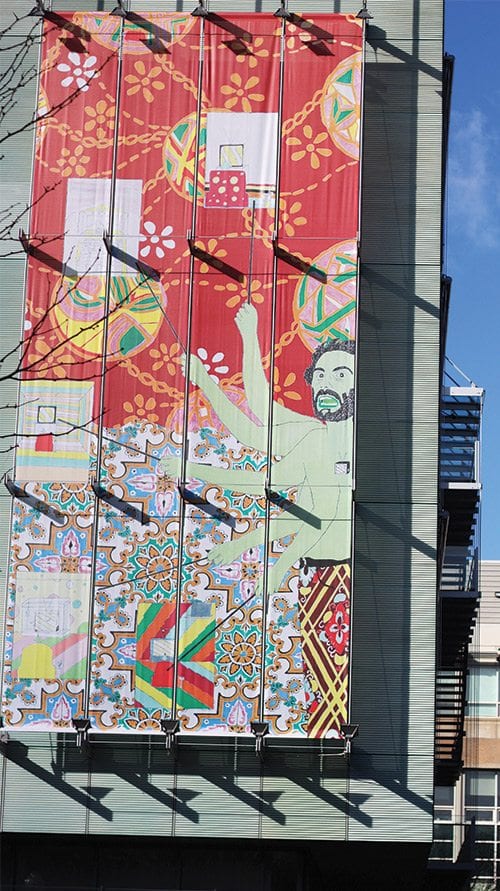Artist Maurizio Cannavacciuolo confronts race relations at the Gardner Museum

January is the final month to see Maurizio Cannavacciuolo’s temporary, site-specific installation, “A Lecture on Martian History,” at the Gardner Museum. As the museum’s current artist-in-residence, Cannavacciuolo’s work is the centerpiece of the Gardner’s current contemporary exhibitions. The artist uses bold colors and cultural influences from his travels to depict a futuristic world taken over by Martians.
When he began the project, the often-racy Cannavacciuolo was warned to keep the work “PG” for the school-heavy Fenway area. He formed the Martian storyline as a subtle, kid-friendly vehicle for a discussion about race relations. Here the alien group is the “other,” marked by their green skin and foreign mannerisms. But the piece reveals, on further investigation, that the Martians may be more like us than originally thought.
Blurring boundaries
The image on the outside of the museum shows a green, multi-armed man facing the viewer and pointing to several boxes that depict different chapters of the story. The background includes two dramatically different designs inspired by Edo textiles from Japan and Cuban tiles from Old Havana. The effect is visually complex. The use of prints likely is a nod to Mrs. Gardner’s affinity for textiles and patterns. This melding of inspirations from around the world also cites an increasingly global society, where borders between countries and cultures are blurred.
In one of the story chapters, the Martians come across a television and are fascinated with its noise and flickering lights. For the remainder of the saga, the television becomes a cult object in Martian life, much as it is for humans. This is a subtle reminder that those who look different from us might be very similar, after all.
Mrs. Gardner was known for her travels and also for her progressive (then seen as “eccentric”) behaviors. Not only would this dialogue likely have interested her, she might very well have invited any invading green Martians in for tea.
One of the wonderful things about a work like this is its ability to appeal to a broad spectrum of people on both basic and complex levels. It is as visually engaging as it is meaningful, allowing its impact to sink in, whether seen only as blocks of colors from a distance, or up-close via careful analysis of the story. In the diverse Fenway neighborhood, where doctors and students bump elbows with artists and entrepreneurs, “A Lecture on Martian History” provides everyone with a reason to stop and think.







